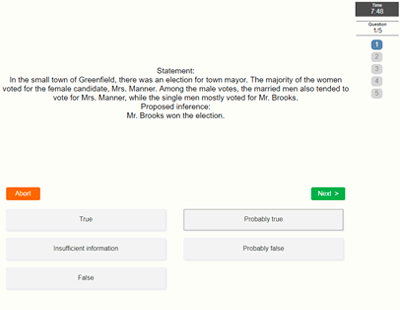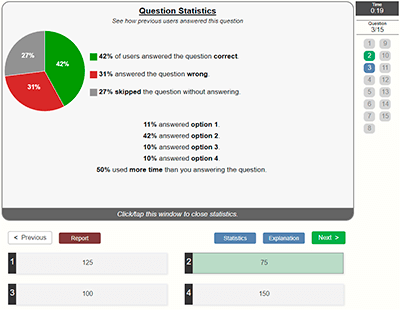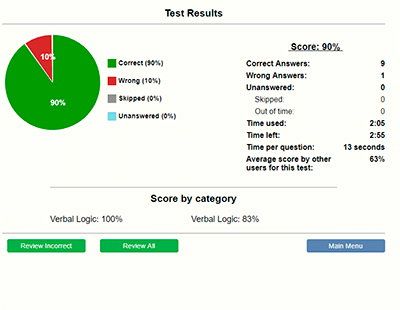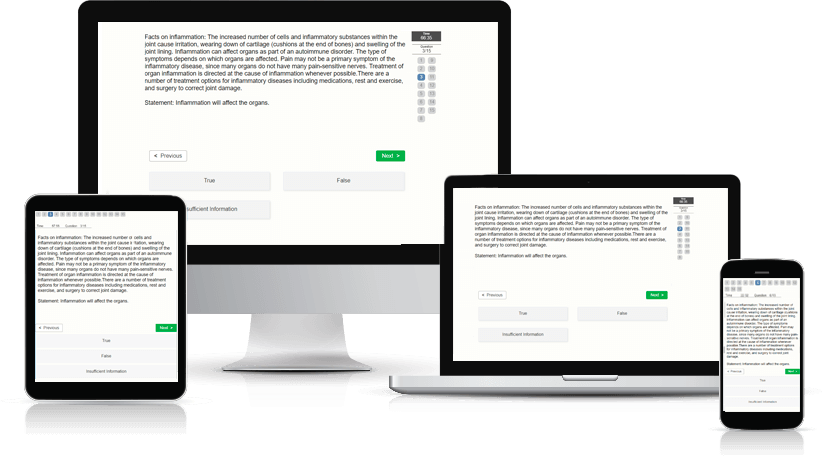Critical Thinking Test
A Critical Thinking test, also known as a critical reasoning test, determines your ability to reason through an argument logically and make an objective decision. You may be required to assess a situation, recognize assumptions being made, create hypotheses, and evaluate arguments.
What questions can I expect?
Questions are very likely to be based on the Watson and Glaser Critical Thinking Appraisal model, which contains five sections specially designed to find out how good an individual is at reasoning analytically and logically. The five sections are:
Arguments: In the argument section you are tested on your ability to distinguish between arguments that are strong and arguments that are weak. For an argument to be strong, it must be both important and directly related to the question. An argument is weak if it is not directly related to the question, of minor importance, or it confuses correlation with causation (which is incorrectly assuming that just because two things are related, they are the cause of each other).
Assumptions: An assumption is something we take for granted. People make many assumptions which may not necessarily be correct; being able to identify these is a key aspect of critical reasoning. An assumption question will include a statement and a number of assumptions. You are required to identify whether an assumption has been made or not.
Deductions: In deduction questions you have to draw conclusions based on only the information given in the question and not your own knowledge. You will be provided with a small passage of information and you will need to evaluate a conclusion made based on that passage. If the conclusion cannot be drawn from the information given, then the conclusion does not follow.
Interpretation: In these questions you are given a passage of information followed by a proposed conclusion. You are to regard the information you are given as true and decide whether the proposed conclusion logically and beyond doubt follows.
Inferences: Inference is a conclusion drawn from supposed or observed facts. It is information that does not appear directly in the given information, but is drawn from it. If, for instance, we go to a public restroom and find the door locked, we will assume/make the inference that it is occupied.
Where are Critical Thinking tests used?
These tests are used in graduate, professional, and managerial recruitment. They are very common in the legal and banking sector.

Practice Critical Thinking Test
Try a free Critical Thinking Test.
This test is a short practice test, the test contains 10 test questions and has a time limit of 6 minutes.
Would you like to improve your test score? Practice smart with a Test Prep Account.
Practice on 150 Critical Thinking questions and a total of 950 verbal aptitude questions with detailed description and score statistics.
The many features of a Test Prep Account:
- Preparation software developed under a didactic and methodical perspective
- High-quality practice test questions
- Clearly explained solutions
- Accessible on all devices
- Detailed score data and progression charts
- Reference scores to compare your performance against others
- Training Assistant
- Practice mode (feedback after every question and no time limit)






